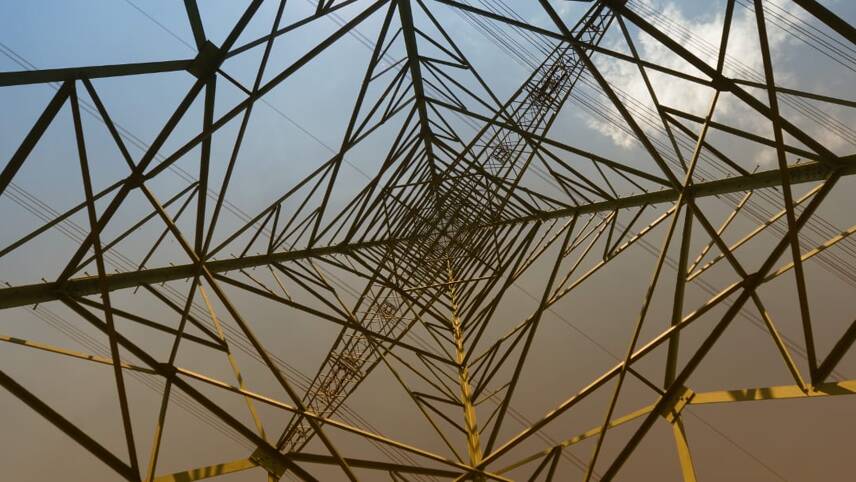Member only content free until 26/05/2024
To continue reading this article and enjoying free access to all Utility Week’s content up to the 26/05/2024 Register today!
Ready to become a member?

Big strides have already been made in decarbonising power generation in the UK.
In 2021, 40% of the UK’s entire energy demand was met by renewable sources including wind, solar, bioenergy and hydroelectric power – up from 9.4% just ten years earlier.
While significant progress has been made in reaching net zero targets, a great challenge lies ahead if the UK is to meet its 2050 goal.
There are two aspects to this challenge. Firstly, balancing supply and demand across the grid is critical. As renewables grow, ensuring we can capture unused energy generated while the sun is shining and the wind is blowing, ready to deploy when generation is lower, is essential.
Secondly, ensuring that the motorway of transmission lines that make up the nation’s energy grid have the connection capacity needed to enable the scale of renewable projects to come online is vital. Quite simply, we need to be able to plug renewable energy generation – whatever form it takes – into the grid.
Re-engineering the grid
Re-engineering the grid – which was built for a finite network of power stations rather than today’s dispersed renewable assets – to meet these two challenges will be no easy feat. In fact, as stated in the International Energy Agency’s 2021 report Net Zero by 2050: “Achieving net zero emissions by 2050 will require nothing short of the complete transformation of the global energy system.”
Currently, gas generation plays a critical part in providing emergency back-up power to keep the lights on when demand spikes and overshoots supply. Historically, this has been due to the weather-dependent nature of renewables meaning they couldn’t be adjusted up and down to match demand in the way fossil-fuel-burning plants can.
However, advances in battery storage technology mean renewables will increasingly be able to play a role in stabilising the grid. This has been recognised by a key rule change made by National Grid ESO last year, broadening the criteria for generators able to apply for stability contracts to renewable generators.
While this is a step in the right direction, there remains only so much scope to add new energy generation projects into the grid. This is especially the case when it comes to smaller generators that would be plugging in at the level of the regional distributors rather than at a national grid level. Until there is more capacity within the grid, and a better and smoother system of connecting projects to it, there will be constraints on how much renewable energy can be harnessed.
As it stands, the grid is not ready. The result is that the large appetite that exists for developing local renewable generation and energy storage capacity is being frustrated and delayed. Stories of developers being told they’ll have a 10-year wait before they can secure grid access are not uncommon. This shortage of grid capacity threatens UK plans to eliminate carbon emissions from electricity generation.
Last month, one of our customers was given a 2033 date to connect a 14MW solar array at a manufacturing plant in the Midlands. It’s not just demoralising that efforts by companies to hit their laudable net zero ambitions are being effectively stymied by access to grid connections, it’s also holding back investment, jobs and community benefits.
Re-engineering our creaking grid to enable more projects to come online means taking action now if we are to unlock the investment and ambition required to secure a resilient net zero energy system. It will also mean putting in place the management capabilities to oversee the rapid increase in renewables projects applying for connection to the grid – the level of demand has risen tenfold in recent years, according to National Grid.
If we are to overcome the gridlock, a more active approach to queue management will be crucial here. It can no longer be acceptable for prospective generators to sit on contracts indefinitely while they overcome financial, planning or feasibility challenges. The approach needs to quickly change in order to fast-track those projects that are ready to build.
Time to prioritise net-zero infrastructure
This new approach is now urgently needed. At a time when consumer and public spending is already stretched, we need to ensure these systems are fit for purpose, support investment and system resilience.
The good news is that we know what needs to be done to make net zero power generation and distribution a reality. This is no longer a challenge of conceptualisation and innovation but of funding and implementation.
We also know the urgency with which these changes need to be made if we are to meet our net zero targets. The clock is ticking. Working together, across government and industry, we must end the gridlock and connect the country to a net zero future.




Please login or Register to leave a comment.